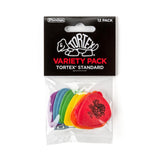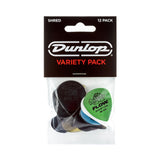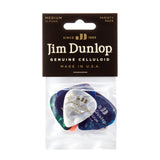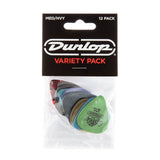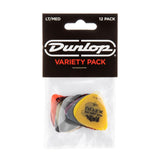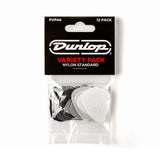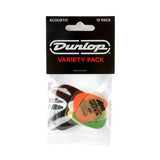The hype and debate around capacitors rages furiously on guitar forums the world over. You may have asked yourself the difference between Paper in Oil, Orange Drop and Mylar or, you may not even be aware there are capacitors in your guitar nor the role they play in generating your tone. Luckily Northwest Guitars is here to clear things up and ensure you’re armed with all the knowledge you need to make the right decision for your instrument. Now, before we get started talking tone, we need to get our science hats on and understand a little more about capacitors, tone pots and the relationship between the two.
What is a Capacitor?
From Wikipedia ‘a capacitor is a device that stores electrical energy in an electric field’. An accurate description for sure, but what does a capacitor do within the confines of guitar electronics? A capacitor (sometimes known as a 'tone cap' or just 'cap') prevents low frequencies from reaching your amplifier by acting as a blocker. A Capacitor is usually soldered between the pickup and jack and depending on its value, will allow a specific amount of high frequencies through.
Tone in Tandem
A potentiometer (known colloquially as a pot or tone pot) is a variable resistor that allows you to change the flow of electricity. Your volume and tone knobs are both potentiometers with slightly different roles, your volume cuts the flow of electricity entirely, whereas your tone knobs other allows certain amounts of a particular signal through. Typically tone pots come in two forms, 250k and 500k. Single coils and brighter pickups like your Strats and Teles tend to use 250k Pots whilst darker (warmer) sounding pickups such as P90s and humbuckers are usually paired with 500k Pots.
The capacitor you choose works in tandem with your guitar tone pot, which acts like a light switch dimmer, squeezing the sound and only allowing particular frequencies through. This gives you the option to adjust your tone on the fly, cutting treble or bass as you please. Different capacitors take different levels of frequency from your signal, which can result in a darker or brighter sound depending on the combination of capacitor and tone pot used.
The Farad
You may have noticed measurements on the descriptions of Capacitors with the suffix uF (sometimes written mF). The ‘F’ stands for Farad which refers to the size of the capacitor. Guitar capacitors are measured in millionths of a Farad, hence the use of the Microfarad, which is written uF. To work in sync with the type of tone pot you have, capacitors are usually matched in the following way:
- 0.047uF Cap > 250k Pot
- 0.022uF Cap > 500k Pot
However this is not a hard rule, because it all depends on the kind of guitar tone you are looking for. With the above combos at lower knob settings you may notice that things start to get muddy, so fitting a capacitor with a smaller uF operating range can result in having a brighter sound when the tone pots are turned down. Hopefully you’re still with us so now that we’ve got the science lesson out of the way, let’s talk type of capacitor!
Paper in Oil
Paper in Oil (PIO) capacitors are an older technology, highly sought after primarily due to their use in many vintage instruments such as 50s era Gibsons. The capacitor is literally filled with paper and a special oil before being sealed in thermoplastic. The thinking behind PIO construction was that it improved cooling and improved insulation, which was necessary at the time due the high voltages involved from audio amplifiers that were vacuum-tube based.
PIO capacitors deliver a darker, warmer and smoother tone, which is why they are so sought after for those seeking a more vintage aesthetic. The Black Beauty and Bumblebee capacitors were used in vintage instruments and guitarists have been seeking these capacitors in their search for tone for some time now. It makes sense that you would use an older technology to get the tone you want, if you’re going to the trouble of installing period correct pickups, body material, paints and machine heads, why stop at the capacitors you use?
Orange Drop
The Orange Drop capacitor came along in the 60s, providing several benefits over PIO with more stability, better resistance to temperature variation, low moisture absorption and excellent characteristics in AC circuits. They are well known again for being used in Gibson instruments, with the guitar giant advertising the fact that their guitars come with Orange Drop capacitors as a design feature.
Orange Drop capacitors are described as ’bright’ sounding and their primary positive comes from the fact that they are so reliable that they essentially never go wrong. For a professional guitarist, stability and consistency is what you need in an instrument that has to play shows night after night, which is exactly why Orange Drop capacitors are so popular amongst guitarists and guitar builders.
A Note on Mylar
If you find that neither Paper in Oil or Orange Drop capacitors are working for you, Mylar capacitors are very highly rated options that don’t break the bank. Similar in construction to Orange Drop capacitors they are often found in a lot of modern guitars thanks to their excellent build quality and reliable performance. The tolerance on Mylar capacitors is much better than those on cheaper ceramic capacitors, meaning you’re going to get a much closer result to the tolerance you want, rather than the less predictable performance of a ceramic capacitor.
In Conclusion
Like many things in the guitar world, capacitor choice really comes down to personal preference. There’s no doubting that your selection of capacitor will affect your tone, but this is a result of many things in the signal chain, including your pickup, tone caps and even the wire you use to connect them all up. At the end of the day you need to envision the guitar sound you want, so if it’s vintage aesthetic and tone, Paper in Oil capacitors might be the one for you, but if you want something more modern, we’d suggest going for Orange Drop or Mylar capacitors. Using your ears when changing parts of your guitar is crucial, because you may find what sounds warm to some guitarists is too bright or vice versa. Luckily capacitors don’t cost much, so it won’t send you over budget if you buy a few to try out!
You can check out all our Capacitors here.
Learn More
Discover how Tone Caps go hand in hand with Tone Pots.
Start learning how to setup your guitar properly with our Guitar Setup Guide.
Our Wilkinson Pickup Guide gives you the low down on these outstanding value pickups.















